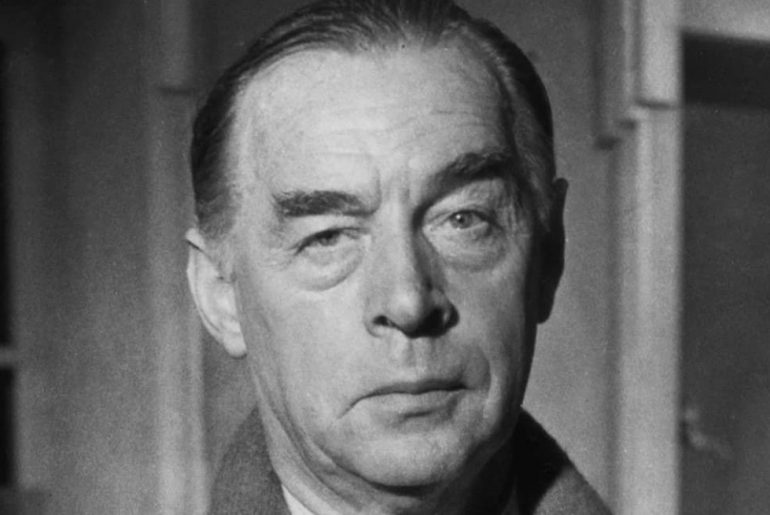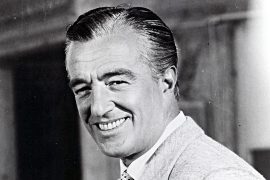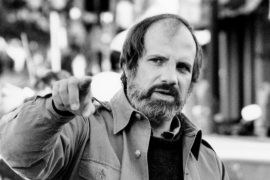The German writer became an international bestseller with his anti-war novel “Nothing New in the West” (1928/29). In it, Erich Maria Remarque processed personal experiences and experiences in the First World War in the memorable story of the soldier Paul Bäumer and his suffering. The realistic depiction divided the audience into enthusiastic pacifists and outraged militarists who – like the National Socialists – saw the book as a disparagement of German soldiers. He landed a second major success with the title “Arch of Triumph” (1945)…
Erich Maria Remarque was born on June 22, 1898 in Osnabrück, the son of the Catholic book printer Peter Remark.
Remarque, whose real name is Erich Paul Remark, attended the catholic teacher training college in Osnabrück after school. In 1916 he was drafted as a volunteer to fight on the western front. He was wounded and was hospitalized in his home country until the end of the war. After the war he took on various jobs, for example as a dealer, organist, teacher or theater and concert critic for the “Osnabrücker Tageszeitung”. In addition, he published poems and prose texts. In 1920 his impressionist artist novel “Die Traumbude” was published. On behalf of a company newspaper, Remarque traveled to Switzerland, Yugoslavia, Turkey, Italy, England and Belgium.
From 1925 he worked as an editor for the Berlin newspaper “Sport im Bild”. In 1929 his novel “Nothing New in the West” was published. He became a worldwide hit. The writer presents his own wartime experiences using the figure of the 19-year-old soldier Paul Bäumer, his suffering and his death. In doing so, he unmasks the sublime heroic death, flattered from above as propagandistic, as an involuntary, cruel death on the battlefield. Its realistic depiction becomes an accusatory cry against the madness of war. The title has been translated into more than thirty languages and filmed three times. In Germany, the book provoked divided opinions: on the one hand, the pacifists were enthusiastic about the anti-war depictions, on the other hand, the militarists were outraged by the descriptions of the soldiers at the front, which they recognized as an insult.
The National Socialists were of the same opinion and burned Remarque’s books. In 1930 the American director Lewis Milestone made the first film adaptation of “Nothing New on the West”. In 1931 the author wrote a sequel to his worldwide success entitled “The Way Back” as a description of those returning from the war. In 1932 Remarque emigrated to Switzerland. There he lived in the former villa of the Swiss painter Alfred Böcklin. Together with the writer Elke Lasker-Schüler, he looks for escape routes for emigrants. In May of the following year his books were banned from public libraries and publicly burned. They were branded with the note “literary treason against soldiers of the world war”.
In 1937 his novel “Three Comrades” was published in London, a year later in Amsterdam in German. In 1938 he was stripped of his German citizenship. In the same year the book “Three Comrades” was published, which was also filmed. A year later he fled to the United States. Many of his novels were filmed there, including a star cast with David Niven and Barbara Stanwyck. He himself played a small supporting role alongside Liselotte Pulver, Dieter Borsche, Barbara Rüttig and Klaus Kinski in his English anti-fascist book “A Time to Love and a Time to Die”. While his first world hit “Nothing New in the West” made him financially independent, he became a made writer in the USA. Two years later, in 1941, his English-language novel “Flotsam” was published in London. In German, the title was presented as “Love your neighbor” in Stockholm.
From 1945 Remarque lived alternately in New York and in Porto Ronco, Switzerland. In 1946 he published his second worldwide literary success, the exile novel “Arch of Triumph”, which was first published in the USA. In it he describes the life of German emigrants before the Nazis invaded. His other books could not connect to the two literary successes. A year later, Remarque became an American citizen. In 1952 his anti-war novel “Funke des Lebens” was published. In 1954 the book “Time to Live and Time to Die” followed, the action of which takes place in Nazi Germany. The publication of “The Black Obelisk”, a novel from the time of the Weimar Republic, followed two years later.
In 1963 the novel “The Night of Lisbon” was published, which also turned against the war. In 1967 Erich Maria Remarque was honored with the Grand Cross of Merit of the Federal Republic of Germany.
Erich Maria Remarque died on September 25, 1970 in Locarno, Switzerland.
His last novel, Shadows in Paradise, was published posthumously in 1971. 30,000 material documents on the life and work of the author are archived in the Erich Maria Remarque Archive of the City of Osnabrück, including the manuscript for “Nothing New in the West”.
What did Erich Maria Remarque do in the war?
In November 1916, Remarque, along with a number of his classmates, was drafted into the German army. After a period of military training, his unit was sent to the Western Front. There he took part in the trench warfare in Flanders, Belgium.
What happened to Erich Maria Remarque?
Remarque died of heart failure at the age of 72 in Locarno on 25 September 1970. His body was buried in the Ronco Cemetery in Ronco, Ticino, Switzerland.
Was Remarque in the war?
A student at the University of Munster, Remarque was drafted into the German army at the age of 18. He fought on the Western Front during World War I and was wounded no fewer than five times, the last time seriously.
Where Did Erich Maria Remarque live?
Osnabruck





